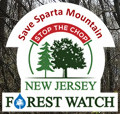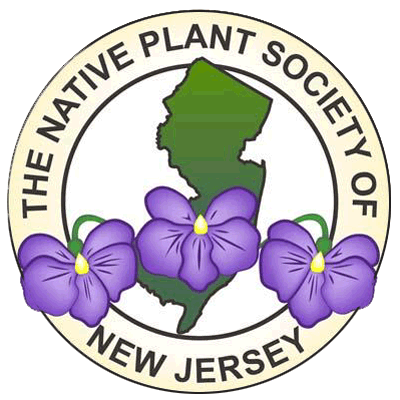
Forest management practices are critical in reducing carbon release into the atmosphere, ensuring wildlife habitat remains to support their protection and reproduction, help ensure clean water supplies, and provide a natural barrier to stormwater runoff. Several approaches to forest management have surfaced: afforestation, reforestation, proforestation and The Young Forest Initiative (“YFI”). The first three approaches share a similar characteristic: they serve to expand or preserve existing forests to yield ecological benefits. The last approach, YFI, relies on tree harvesting and logging to create new young forests ostensibly to generate preferred habitats for certain bird species. Among all four, the proforestation forest management approach emphasizes preserving and protecting existing forests. It discourages tree removal through logging. In her book “The Once and Future Forest, a Guide to Forest Restoration Strategies,” Leslie Jones Sauer further explores the concept of proforestation and introduces the alternative forest management practices anchored on that concept.
Tell me more about “Proforestation”

|
| The beauty of New Jersey’s forests - Credit: mycentraljersey.com |
Proforestation is a term that refers to the conservation, protection, and restoration of mature, intact forests as a way to mitigate climate change and maintain biodiversity. Proforestation focuses on preserving and protecting existing forests. It differs from other forest management approaches that involve planting new forests or trees (afforestation, reforestation) or the more controversial technique advanced by the Young Forest Initiative (or Project).
Proforestation is based on the idea that mature forests are the most effective at sequestering and storing carbon. They provide a wide range of other ecological services, including habitat for wildlife, water purification, and soil stabilization. In contrast, younger or newly planted forests, such as those created due to the YFI approach, have not yet developed mature forests' complex ecosystems and carbon storage capacity.
Proforestation has gained increasing attention as a cost-effective and nature-based solution to climate change. Proforestation advocates argue that protecting and restoring existing forests is more sustainable and equitable than relying on large-scale tree planting efforts.
Proforestation highlights the concerns and activities that should be addressed in public forest planning to manage our forests without logging. These include inventory, deer management, pests, and invasive species management, hazardous, downed, and dead trees, young forest creation for Early Successional Habitat (ESH), regeneration, biodiversity and selected species management.
One significant advantage of the proforestation approach is that it does not involve logging, which releases carbon into the atmosphere. Retaining all woody material on site helps to maintain high levels of sequestration and rebuilds the soil. The proforestation approach contrasts with the YFI, which involves logging to create new young forests, leading to a tremendous loss of stored carbon and future sequestration potential.

|
| Japanese barberry - a pervasive threat to New Jersey’s forests - Credit: srrpnj.org |
Another benefit of proforestation is that it addresses the problem of invasive species without logging. Invasive plant species are a significant problem in forests in the northeastern United States, especially in New Jersey. These plants are non-native and outcompete native species for resources, disrupting the balance of the forest ecosystem, and leading to a reduction in biodiversity, changes in soil composition, and alterations in the forest structure. This region's common invasive plant species include Japanese barberry and garlic mustard. These plants spread rapidly and are difficult to control, making them a challenging problem. The proforestation approach to invasive plant species management is mechanical removal, integrated pest management, and on-site treatment.
In contrast, logging can exacerbate any existing problems with invasive species by opening up the forest canopy, thereby increasing sunlight on the forest floor and encouraging their spread. Also, logging creates physical pathways to promote their spread.

Proforestation also highlights the importance of managing deer populations. The extreme overabundance of deer is a serious issue affecting our public and private forests. While canopy-opening projects, such as one conducted by the New Jersey Department of Environmental Protection at Sparta Mountain Wildlife Management Area, tend to increase deer populations, stopping logging on public lands will help reduce deer populations. A much more effective strategy is needed to control deer populations to maintain forest health.
Proforestation requires resources to monitor all plant species on site using Floristic Quality Assessment (FQA). It also subscribes to the prescribed burning technique.
What about the Young Forest Initiative Approach?
YFI promotes the creation of new young forests that provide valuable habitats for certain bird species. Such habitats are created by logging mature forests, and the resulting young forests break even at the rate at which carbon is absorbed and stored within 80 years.
Moreover, YFI ignores deer management, invasive species management, and regeneration. Notably, these concerns and issues are proactively addressed by proforestation.
What is best for New Jersey’s forests?

|
| Roaring Rock Park, Washington Township, Warren County, NJ - Credit: srrpnj.org |
Forest management plans based on the YFI and Proforestation approaches have benefits and drawbacks. Those based on YFI promote the creation of new young forests that provide valuable habitats for certain bird species. Still, they involve logging, which reduces carbon sequestration potential and contributes to the adverse effects of climate change. Proforestation addresses the problem of carbon release without logging and emphasizes the management of deer populations, invasive species, and regeneration.
Ultimately, the best approach to forest management depends on the specific forest and its unique characteristics. Like woodlands up and down the U.S. eastern seaboard, New Jersey's forests are threatened by invasive species and burgeoning deer populations. Current forest management practice is heavily invested in the Young Forest Initiative approach, which has significant consequences when addressing these critical issues. In addition, the logging techniques, promoted under the Young Forest Initiative, release carbon stored in the trees as they are removed. Their physical removal also removes their contributions to the global carbon sink necessary to combat climate change.
Unfortunately, the New Jersey Department of Environmental Protection’s Fish and Wildlife Service is a YFI partner and uses forest management practices aligned with it, i.e., its technique of widescale tree removal. Concerned New Jersey residents should contact their state representatives to voice opposition to this practice and support preserving New Jersey’s remaining public forests.


No comments:
Post a Comment
Comments are subject to our Terms of Use